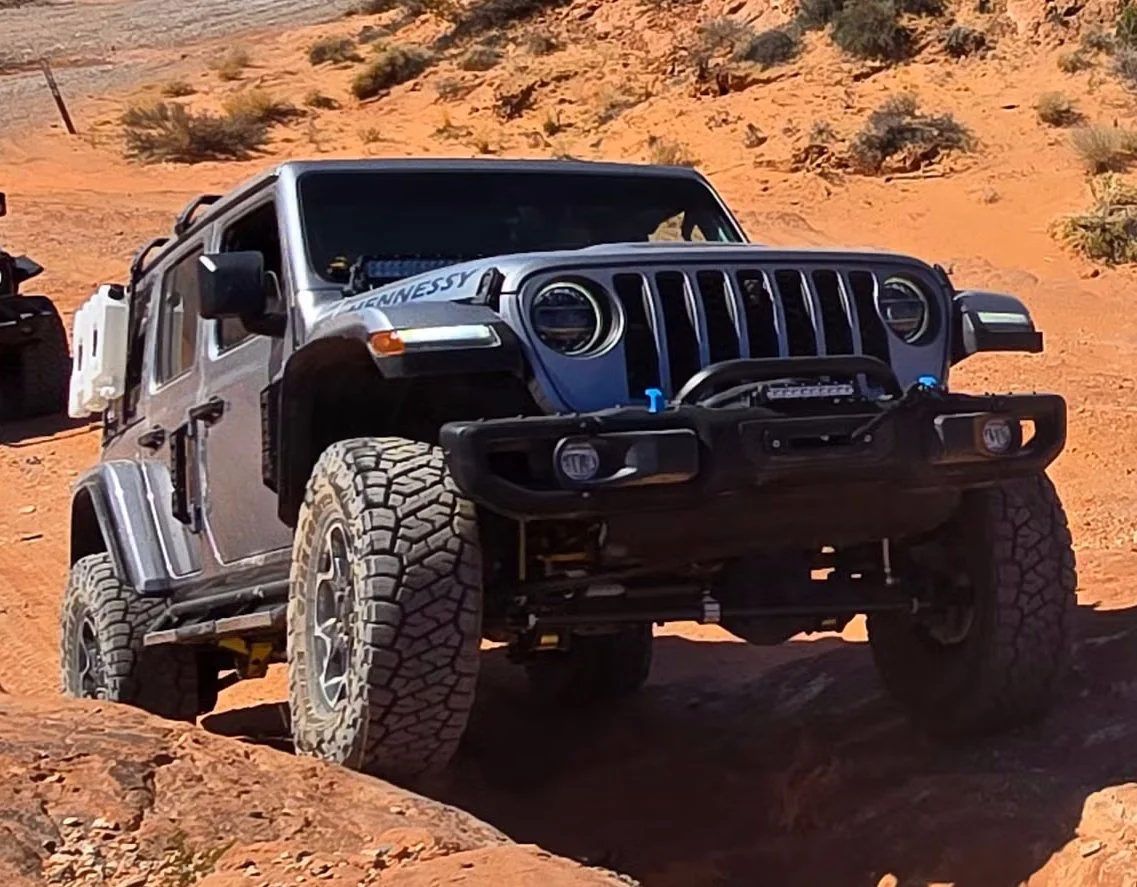
There is always a little more to learn about offroading.
Trail Basics
Save your Jeep brakes: AutoStick M-mode
Many beginners are not familiar with “manual” shifting in their automatic transmission equipped Jeeps. Our Jeeps came from the factory with eight speed automatic transmissions that work seamlessly as we drive and shift more accurately than most human drivers. So why would we want to temporarily go “manual” and try to beat the computer?
Because the computer controlling our automatic transmission was programmed for everyday street driving and cannot analyze upcoming road conditions.
As humans, we can see quite a distance ahead and can predict whether we will need to slow down for tight curves along descending switchbacks, or to maximize torque to climb a dirt hill, clamber over an obstacle, or to use our engine instead of our brakes to control a steep descent.
Water Crossings
Here are a few things that beginners should know about water fording in a Jeep.
Jeeps are not boats. Offroad does not mean offshore. One of the great marketing myths is that Jeeps are impervious to water, and that it is okay to ford rivers or streams in your path.
First, let’s discuss the inherent risks of the obstacle itself – in this case, the actual water. Then, we will examine the vulnerabilities of our Jeep when partially submerged.
Trail etiquette
Bouncing along a natural path, embraced by the scent of fresh mountain air under clear, open sky is exhilarating, to say the least. Unburdened from urban traffic, one feels free from civilization.
Unshackled perhaps from the rules of the city, but trail runs do come with their own codes of conduct.
4wd explained
The first part of this article briefly talks about the difference between four-wheel-drive (4wd) and all-wheel-drive (AWD). The second part explains how and when to engage 4wd in your Jeep. If this text seems familiar, yes this is an excerpt from our Beginners Guide to Offroading.
Understanding Traction Control and Electronic Stability Control
There are two electronic functions on a Jeep (and some other 4x4’s) that we normally want to disable for offroading: Traction Control (TC), and Electronic Stability Control (ESC). In this article, we will explain what these functions do and why we choose to NOT USE them during our offroad jaunts.
Your first trail run
Here is a brief explanation based on how our Jeep club (Desert Wranglers in Las Vegas NV) organizes our trail runs. If you have been on organized trail runs, then most of this is not new. But if you are just getting started in off-roading, this will describe how things are run and what to expect on your first trail run.
Not all clubs are as organized and meticulous as we are, but let this article serve as a teaching example.
Understanding Trail Ratings
When searching out Trail runs, obviously we want to know ahead of time how easy or difficult that particular trail is rated. Is that trail a reasonable choice for our vehicle’s offroad capabilities and our driving experience? Just what in heck are we getting ourselves into?
There are three systems for rating our 4x4 trails.
It’s OK to say NO
Offroading can become an addiction. It will generate exhilaration, a sense of accomplishment, a state of adventure, and lasting friendships. Once you get a taste of “dirt” — you begin to crave hitting the trail as often as your schedule and wallet allow.
Sometimes, though, you just need to step back and tell yourself “NO.”
Tips from Montana Overland 4x4
When we find a website with some good information, we like to share that discovery with our readers.
Every now and then, very good educational articles from Montana Overland & 4x4 Adventures show up in our Facebook feed. They have a very good website, with links about local offroad clubs as well as tips for beginner offroaders.
Rather than copy with permission (which they did indicate was okay) or repost their materials, it is better just to provide a direct link to their excellent website. Our goal at offlroading.info is to support and promote local websites, not to compete with them!










